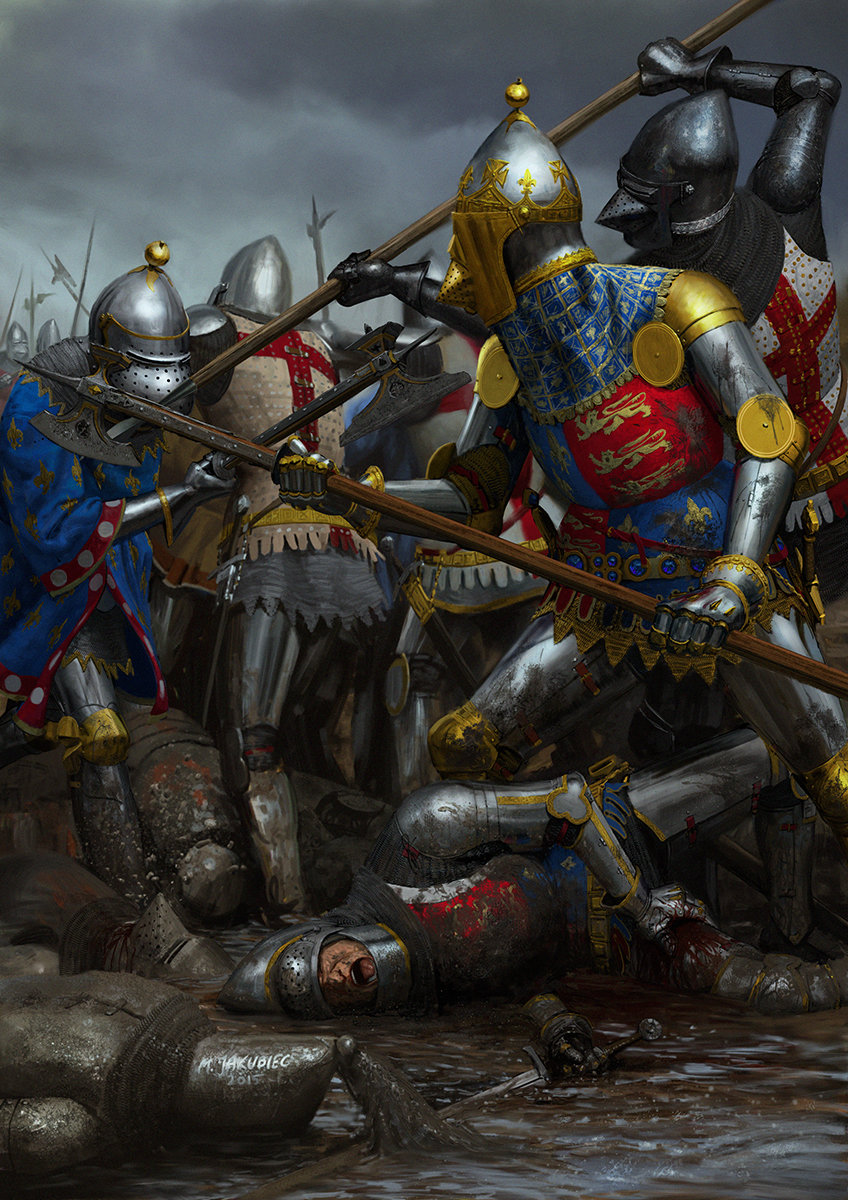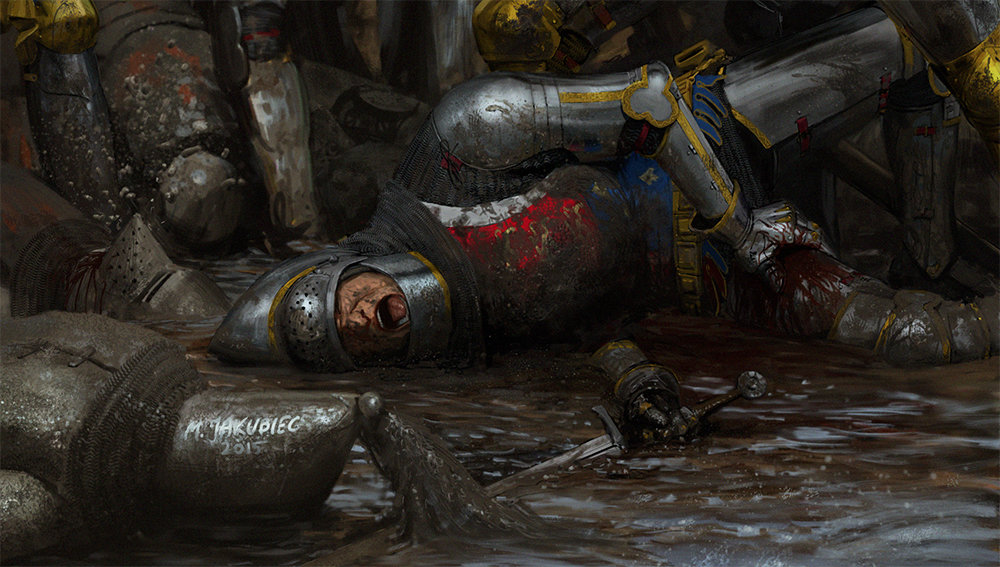

Agincourt
The life of the Medieval nobility was one of privilege, riches and excess. To prove one's worth, a typical nobleman would often engage in social displays of various kinds, trying to outdo his peers in showing off his riches. From commissioning a new castle to purchasing a splendid falcon, every possession was seen as a way to boost one's splendor while diminishing that of his neighbors. There were numerous ways to show off wealth. Among the most expensive was armor. Magnificent suits made by only the most skillful of craftsmen were a combination of engineering, ingenuity, utility and beauty. It is no surprise that every knight wanted to be seen in the best specimen of technological wonder he could afford. Equipped with the most expensive suits of wearable art, riding the priciest destriers and sporting luxurious jewelry, the knights would often gather at festivals to show off their wealth. One such festival took place at Agincourt in 1415, where a new way of impressing one's peers came to life. It started much like any other social gathering: two large groups of knights from France and England met to show off their newest most prized possessions. This time however, one small incident triggered a chain of events that gave birth to a whole new tradition. During one of the rainier days, the English king Henry V, wearing his splendid, richly gilded suit, slipped and fell in the mud. He was able to turn his mishap into a new way of impressing other knights. What better way to impress others with an expensive piece of armor, than to show total disregard for it? Pretending a little mud is nothing, implying he has much better armor back home , Henry laughed it off. Not to be outdone, other knights quickly followed suit, trying their hardest to show how little they cared about their expensive armor getting muddied. When this new fad reached critical mass, what resulted was the biggest mudbath in recorded history. Soon everyone was wallowing in the muck, pretending not to be fazed, while simultaneously doing their best to avoid damaging their precious suits of armour while getting the others muddy. This continued until Humphrey of Lancaster, Henry's younger brother (depicted on the bottom) cut himself on a beer bottle - a danger that still lurks in the mud frequented by the festival-goers of today. While creating this cover for Medieval Warfare Magazine I had a great pleasure of working with Tobias Capwell, the curator of the Wallace Collection, who is a great source of knowledge about armor. His expertise and guidance helped me appreciate armor on a deeper level, see it as something more than merely protection and learn a great deal about the subject.